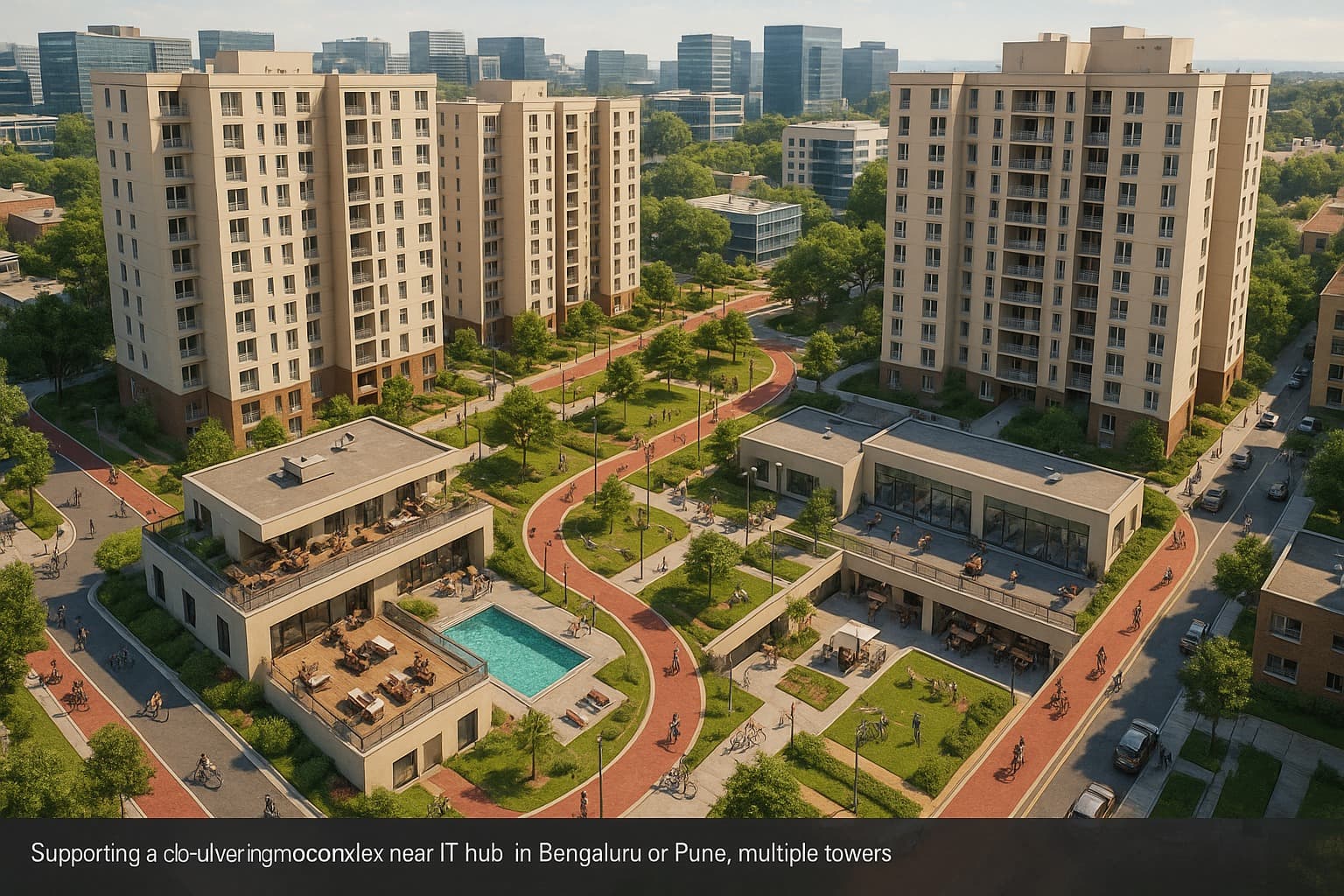Co-Living Market Trends 2025: The Future of Shared Housing in India
Summary
India's co-living market is booming, driven by affordability and community. The 2025 trends point to continued growth, attracting investors and reshaping urban housing for students and young professionals seeking flexible, hassle-free living.

The Indian real estate landscape is witnessing a major shift, with co-living India emerging as one of the fastest-growing segments in urban housing. As cities face skyrocketing rental prices and limited space, shared housing trends are gaining traction among students, young professionals, and IT workers seeking affordable, flexible, and community-oriented living. The co-living 2025 market is expected to see unprecedented growth, offering solutions to India’s evolving urban housing demands while creating new investment avenues for developers.
With rising urban migration, increasing single-person households, and a booming young workforce, co-living demand is no longer a niche concept—it’s becoming mainstream in rental housing India.
Why Co-Living Is Booming in India
Several factors are driving the surge in co-living spaces market growth in India. First, affordability: high rents in metros like Bengaluru, Mumbai, and Pune make traditional apartments inaccessible for many young professionals. Co-living provides fully furnished accommodations at a fraction of the cost, making it highly attractive.
Second, convenience plays a crucial role. These spaces are often move-in ready, with utilities, maintenance, and Wi-Fi included—reducing the hassle of traditional renting. For students and early-career professionals, demand for co-living among students and professionals is growing rapidly as it combines comfort, flexibility, and a sense of community.
Finally, lifestyle appeal is significant. Co-living spaces are designed to encourage interaction, networking, and collaboration. For many, living in a vibrant, socially engaging environment is as important as affordability, reinforcing why co-living is becoming popular in Indian real estate.

Market Trends in 2025
The co-living real estate trends 2025 reveal that developers are increasingly treating co-living as a mainstream segment rather than an experimental concept. Cities like Bengaluru, Hyderabad, Pune, and Gurugram are seeing rapid expansion of co-living projects near IT hubs, universities, and business districts.
Another emerging trend is customization. Modern co-living spaces cater to diverse audiences—students, young professionals, and even senior executives seeking temporary housing. Developers are now providing tiered options, from budget-friendly shared rooms to premium private units, ensuring broad appeal. This trend reflects the future of co-living spaces in India for students and IT hubs, combining affordability, convenience, and lifestyle.
Technology is also transforming the sector. Smart access controls, app-based services, and digital community platforms enhance the living experience, making co-living spaces more attractive and manageable for both tenants and operators.
Investment Opportunities
The co-living sector investment opportunities are expanding rapidly. With the rental market in major cities under pressure, institutional investors and real estate developers are increasingly allocating capital to co-living projects. Unlike traditional rentals, co-living properties offer higher yields per square foot due to shared facilities and managed services, providing strong returns for investors.
Moreover, co-living spaces are scalable and flexible, allowing developers to quickly adapt to changing demand. This makes them an ideal solution in India’s dynamic housing landscape, where young, mobile populations are seeking short-term, hassle-free rental options.
Challenges and Considerations
While co-living market trends and growth in India 2025 are promising, developers and investors must navigate challenges. Regulatory clarity is still evolving in many cities, and zoning laws may impact project approvals. Ensuring safety, privacy, and hygiene standards is critical, especially in shared spaces.
Market saturation in certain urban areas could also pose a challenge, emphasizing the importance of strategic location selection and value-added amenities. Successful projects differentiate themselves through community-driven experiences, modern design, and strong property management.
Social and Cultural Appeal
Co-living isn’t just about affordability—it’s about community. Many residents value the social aspect, forming friendships, networks, and even professional collaborations. This is especially appealing for young professionals moving to new cities who might otherwise feel isolated.
The popularity of shared living as a housing solution in India also reflects changing cultural attitudes. Young Indians increasingly prioritize experiences and convenience over traditional notions of homeownership, making co-living an attractive and viable alternative to conventional rentals.
Future Outlook

Looking ahead, the co-living market trends and growth in India 2025 indicate continued expansion, especially in metro cities and emerging Tier-1 and Tier-2 hubs. Developers are expected to integrate co-living with coworking spaces, lifestyle amenities, and smart city infrastructure, enhancing the value proposition for tenants.
Furthermore, global investors are showing interest in India’s co-living sector, attracted by its high growth potential and strong demand among the urban millennial population. The growth of co-living as an alternative to traditional rentals will likely accelerate, making it a permanent and mainstream component of India’s rental housing ecosystem.
Conclusion
The rise of co-living India reflects a paradigm shift in urban housing. Shared housing trends are no longer experimental; they represent a practical, lifestyle-oriented, and investment-friendly solution to India’s rental challenges. As co-living 2025 projects proliferate in metros and IT hubs, developers and investors are recognizing the sector’s long-term potential. With affordability, convenience, and community at its core, co-living is set to reshape rental housing India, offering a sustainable, scalable, and socially engaging alternative for students, professionals, and young urban residents alike.
Summary (100 words)
The co-living market in India 2025 is witnessing rapid growth, driven by affordability, convenience, and lifestyle appeal. Co-living spaces market growth in India is fueled by demand from students, young professionals, and IT workers seeking flexible, fully furnished housing. Developers are innovating with tiered offerings, technology integration, and community-focused amenities, making shared living as a housing solution in India mainstream. Investors are increasingly attracted to this sector due to higher yields and scalability. With the future of co-living spaces in India for students and IT hubs promising sustained expansion, co-living is emerging as a permanent, viable, and socially engaging alternative to traditional rentals.
